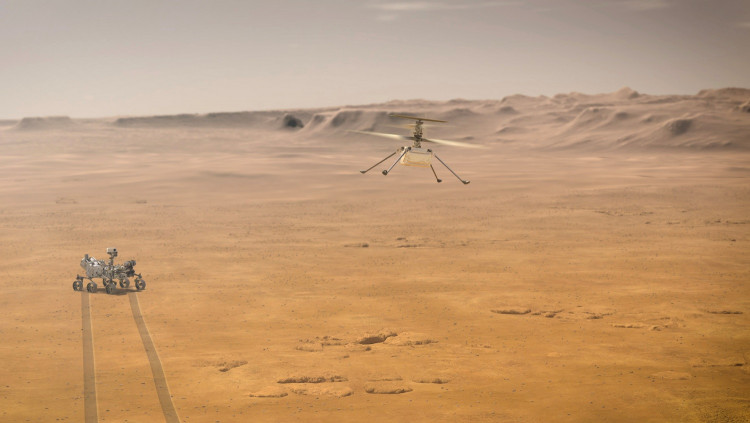NASA's Perseverance rover has arrived at some unusual and fascinating Martian terrain.
A boulder balances precariously atop a slab of gray rock to the left of the tableau. At right-center, a structure that resembles an open-mouthed snake head protrudes from a layered reddish butte.
Much to look at on Mars this week! #PerseveranceRover is at Hogwallow Flats and WOW it’s a space geologists’ wonderland! The smooth balancing rock in the center? How’d it get and stay there through the sands of Martian time? NASA/JPL-Caltech/ASU/MSSS/C. Rojas pic.twitter.com/jxItnWgVb5 — planeta rojas (@corrinerojas) June 15, 2022
The eye-catching image piqued the interest of Mars lovers online. Astrobiologist David Grinspoon described it as "perhaps the most evocative photo ever taken on Mars."
The Perseverance team is enthusiastic about this Mars scene for significantly less speculative reasons. The stratified butte appears to be part of an ancient river delta that previously existed within the 28-mile-wide (45-kilometer) Jezero Crater, where the six-wheeled robot and its diminutive partner, the Ingenuity helicopter, landed in February 2021.
Perseverance has two main missions: find evidence of past Mars life, assuming any exists, and collect and cache dozens of samples for future return to Earth. Perseverance team members have stated that Jezero's ancient delta is the best spot for the rover to undertake such work; indeed, the delta's existence is the primary reason the rover was sent to Jezero.
Perseverance has been exploring the crater's floor, scouting out paths, and trying to identify interesting science objectives for the rover, thanks to Ingenuity. Since completing its primary mission, a 30-day, five-flight campaign aimed to demonstrate that powered flight is viable on Mars despite the planet's thin atmosphere, the helicopter has been undertaking reconnaissance work.
Winter is approaching in the Jezero region, and the dropping temperatures are making life difficult for the small chopper, which has only flown 29 times so far. However, the Ingenuity team was prepared for such adversity and is certain that the rotorcraft will continue to fly for some time.
As temperatures dropped in recent weeks, operators at NASA's Jet Propulsion Laboratory (JPL) in Southern California began sleeping Ingenuity every night to safeguard its systems from the severe conditions.
Despite this, significant temperature swings between day and night have put a strain on Ingenuity's components, and recent tests revealed a malfunction in the vehicle's inclinometer, one of its navigational sensors, mission team members said earlier this month in a status update.
The software repair will take several sols (Martian days) to fully upload, according to JPL officials, and will be followed by another round of vehicle diagnostics.
"Barring additional surprises, we anticipate that Ingenuity will take to the skies for Flight 29 - a repositioning move to the southwest designed to keep us within communication range of Perseverance - in the near future," NASA said.




